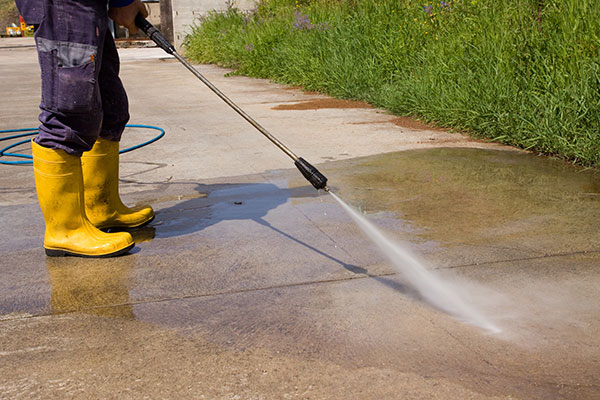
Dried-on mud or stubborn clay caked onto the foundation of your home isn’t just an eyesore — it can lead to staining, moisture issues, and even damage over time. If you’ve tried hosing it down or scrubbing with a stiff brush to no avail, you’re not alone.
So the big question is: Can pressure washing remove that hardened mess effectively — and safely? 💥💧
The short answer is: Yes — pressure washing is one of the best ways to remove dried-on mud or clay from your foundation, but there are a few key techniques and precautions to keep in mind. This guide breaks down everything you need to know to do it right. 🧼✅
🧱 Why Mud and Clay Stick So Well
Before we get into the how-to, it helps to understand why mud and clay can be such a pain to clean:
- Clay has fine particles that adhere tightly to porous surfaces like concrete or brick.
- When it dries, it hardens like glue, especially in warm climates.
- Repeated wetting and drying can bake stains deep into the surface.
- It often builds up in textured or cracked areas, making it harder to scrub off manually.
This is where pressure washing becomes your best friend. 💪
💧 What Kind of Pressure Washer Works Best?
For this job, you’ll want a medium to heavy-duty pressure washer:
- PSI (pounds per square inch): At least 2500 PSI is ideal for hardened mud or clay.
- GPM (gallons per minute): A higher GPM (2.3+) will help flush debris faster.
- Nozzle: Use a 15° or 25° nozzle — these offer a powerful yet controlled spray pattern.
❗ If you’re working around painted or sealed foundations, start with a wider nozzle and lower pressure to avoid damage.
Browse Amazon Here For Top Rated Power Washers And Accessories
🧼 Step-by-Step: Removing Dried Mud or Clay
1. Soak the Area First 💧
Don’t go straight in with high pressure. Wet the mud or clay first for 5–10 minutes to loosen the bond between it and the surface.
2. Apply a Cleaning Solution (Optional) 🧴
Use a concrete-safe or foundation-safe degreaser if the mud is particularly stubborn or stained. Let it sit for 10–15 minutes before rinsing.
3. Use the Right Spray Technique
- Stand about 8–12 inches away from the wall.
- Hold the wand at a 45° angle to avoid digging into mortar or cracking paint.
- Work in horizontal sweeps, overlapping each pass for consistent coverage.
4. Repeat if Necessary
Dried clay sometimes needs multiple passes to fully remove. Reapply detergent and pressure wash again if needed.
🚫 What NOT to Do
Here are a few common mistakes to avoid:
❌ Don’t use a 0° nozzle — it can etch concrete or damage mortar.
❌ Don’t spray upward underneath siding or cracks, which can force water into your home.
❌ Avoid using acidic cleaners unless you’re trained — they can discolor masonry or harm landscaping.
❌ Don’t rush — aggressive washing can do more harm than good.
🌿 Environmentally Safe Tips
Washing mud and clay often means discharging dirty water and sediment. To do it responsibly:
- Avoid washing near storm drains
- Use biodegradable soaps
- Divert runoff into gravel beds or grassy areas where possible
- Check local ordinances for pressure washing waste disposal
♻️ Keeping things eco-friendly is a win for your home and the environment.
Browse Amazon Here For Eco-Friendly Pressure Washing Detergents
✅ When to Call in a Pro
If you’re dealing with:
- Very large areas
- Heavily stained surfaces
- Cracked, fragile, or painted foundations
- Or just want a pristine, uniform finish…
…a professional pressure washing service may be your best bet. They’ll have commercial-grade tools and know how to avoid damage.
🏠 The Final Word
Pressure washing can absolutely remove dried-on mud and clay from foundation walls — often better than any other method. Just be sure to:
✅ Pre-soak the area
✅ Use the right nozzle and pressure
✅ Wash at a safe angle
✅ Take your time
With a little care, your foundation can look clean, crisp, and completely free of that pesky mud buildup. 💪🧼🏡
Browse Amazon Here For Top Rated Power Washers And Accessories






